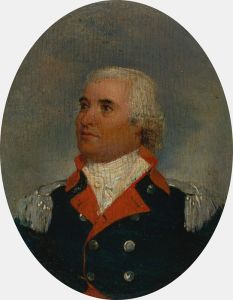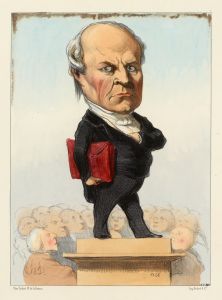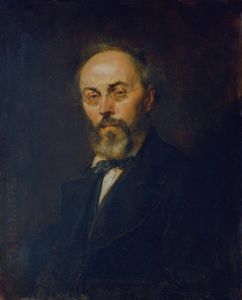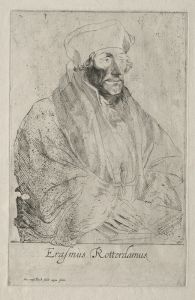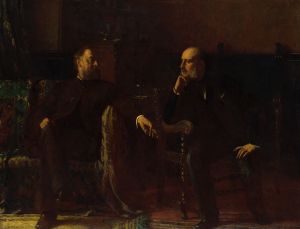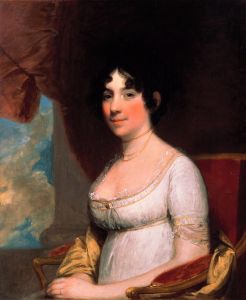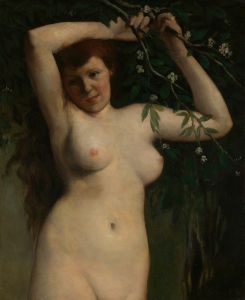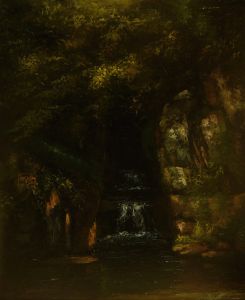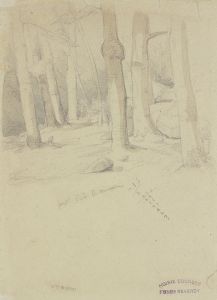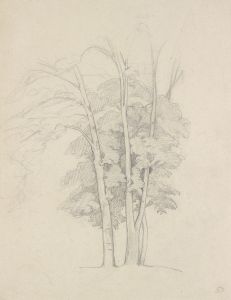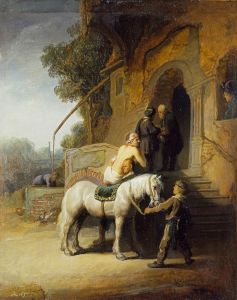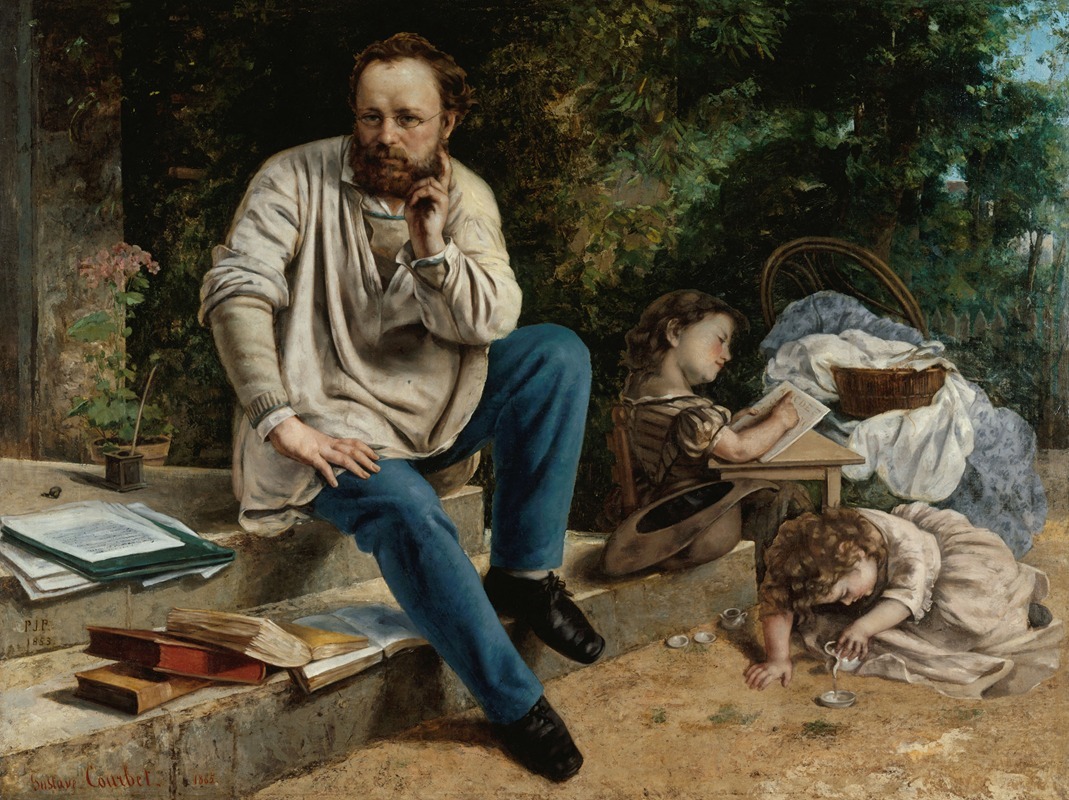
Pierre-Joseph Proudhon et ses enfants en 1853
A hand-painted replica of Gustave Courbet’s masterpiece Pierre-Joseph Proudhon et ses enfants en 1853, meticulously crafted by professional artists to capture the true essence of the original. Each piece is created with museum-quality canvas and rare mineral pigments, carefully painted by experienced artists with delicate brushstrokes and rich, layered colors to perfectly recreate the texture of the original artwork. Unlike machine-printed reproductions, this hand-painted version brings the painting to life, infused with the artist’s emotions and skill in every stroke. Whether for personal collection or home decoration, it instantly elevates the artistic atmosphere of any space.
"Pierre-Joseph Proudhon et ses enfants en 1853" is a painting by the renowned French artist Gustave Courbet, completed in 1865. This work is a significant example of Courbet's realist style, which sought to depict subjects truthfully without idealization. The painting portrays the influential French philosopher and socialist Pierre-Joseph Proudhon with his children, capturing a moment of domestic life.
Gustave Courbet, born in 1819 in Ornans, France, was a leading figure in the Realism movement, which emerged in the mid-19th century as a reaction against the Romanticism that had dominated French art. Courbet's commitment to realism was characterized by his focus on everyday scenes and ordinary people, challenging the conventions of academic art at the time.
Pierre-Joseph Proudhon, the subject of the painting, was a prominent thinker known for his contributions to anarchist theory and his critique of property. His famous assertion that "property is theft" encapsulates his belief in the social injustices perpetuated by private ownership. Proudhon's ideas were influential in the development of socialist and anarchist movements in Europe.
The painting "Pierre-Joseph Proudhon et ses enfants en 1853" depicts Proudhon in a domestic setting, surrounded by his children. This intimate portrayal contrasts with the public persona of Proudhon as a radical thinker and political activist. Courbet's choice to depict Proudhon in this manner reflects the artist's interest in the personal and human aspects of his subjects, aligning with his realist approach.
Courbet's technique in this painting is notable for its attention to detail and the use of a muted color palette, which enhances the naturalism of the scene. The composition is carefully balanced, with Proudhon positioned centrally, drawing the viewer's attention to his thoughtful expression and the tender interaction with his children. The setting is modest, emphasizing the philosopher's humble lifestyle and reinforcing the themes of family and domesticity.
The painting is also significant for its historical context. Completed in 1865, it reflects the turbulent political climate of France during the mid-19th century, a period marked by social upheaval and the struggle for workers' rights. Courbet himself was an active participant in the political movements of his time, and his friendship with Proudhon was rooted in their shared commitment to social change.
"Pierre-Joseph Proudhon et ses enfants en 1853" is housed in the Petit Palais, Musée des Beaux-Arts de la Ville de Paris. It remains an important work within Courbet's oeuvre, exemplifying his dedication to realism and his ability to convey the complexity of his subjects through art. The painting not only captures a personal moment in the life of a significant historical figure but also serves as a testament to the enduring power of art to reflect and influence social and political thought.





